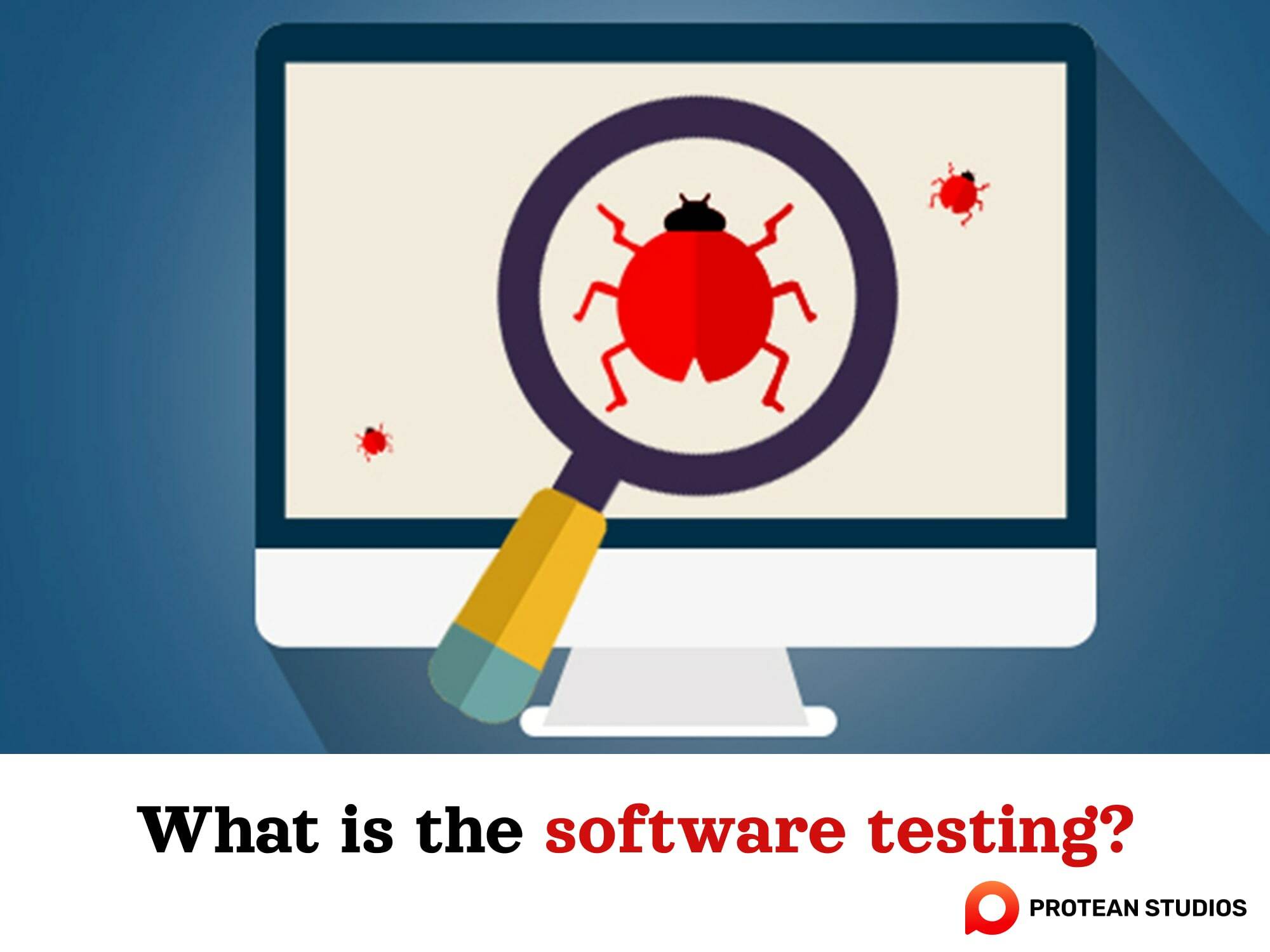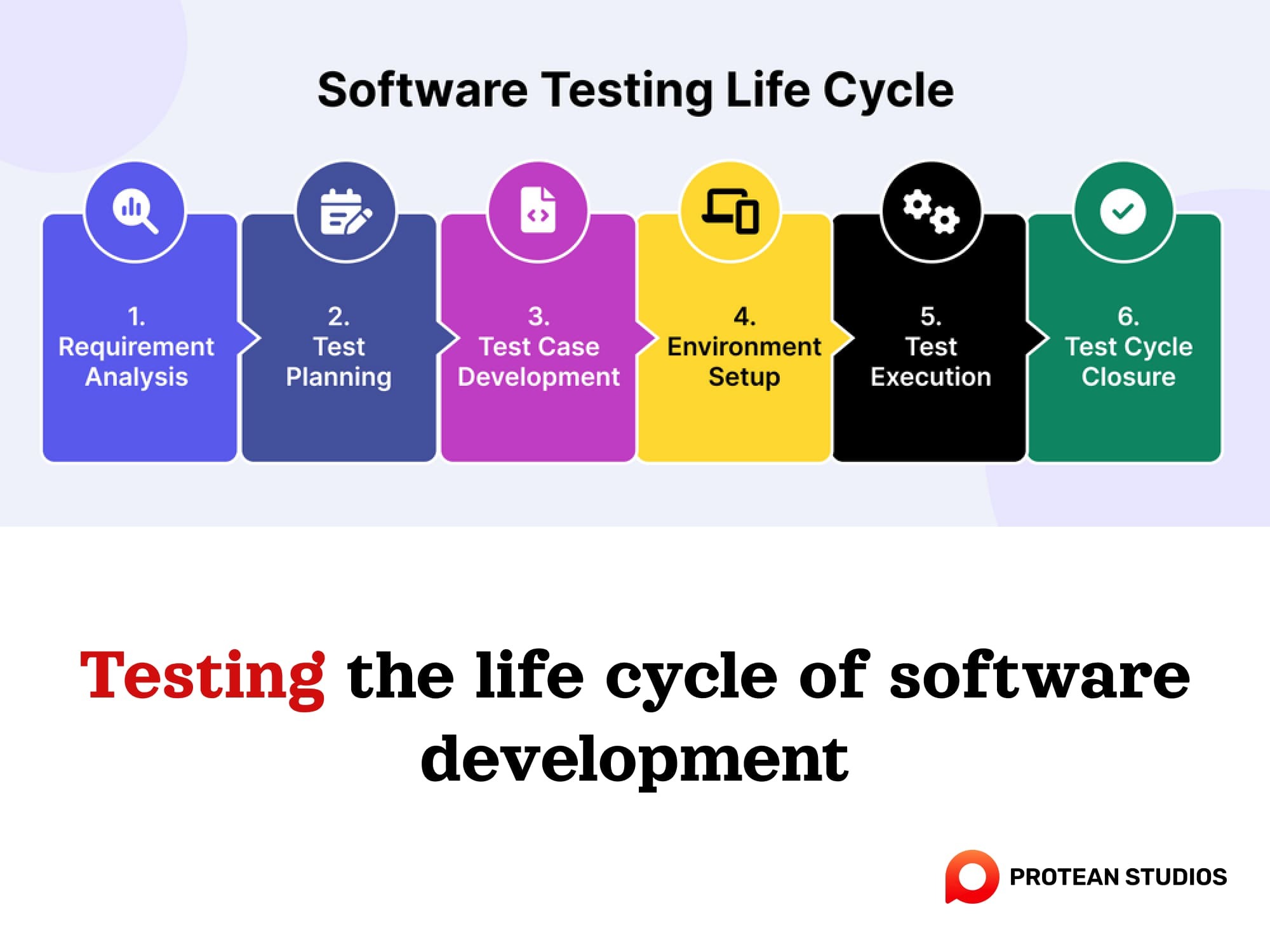Software testing is a critical and integral part of the software development lifecycle. It serves as the quality assurance mechanism that ensures the reliability, functionality, and performance of software applications. In the article, we will delve into the key concepts, methodologies, and principles of testing. And then explain its significance in the world of software development.
I. All about software testing
Software testing is the process of checking and validating the quality, functionality, and performance of software products before introducing them to the market. This work is to know whether a software product meets the requirements and expectations of the stakeholders or not.

It involves various activities, such as planning, designing, executing, and evaluating test cases. The goal is to ensure that the software product is free of defects, errors, and bugs. Thus, the primary role of software testing is to identify and fix defects and issues in software applications. Besides, testing also helps mitigate risks associated with software failures and enhance the user experience.
II. Why do we need software testing?
Software development is very complex, with many different phases that can cause some errors during the development process. Thus, software testing is a necessary step to guarantee the quality and efficiency of products. Here are some reasons why we need to test software.
Quality Assurance: The primary purpose of software testing is to ensure that the software meets quality standards and operates as intended. It helps identify and rectify defects, bugs, or issues that could compromise the functionality and reliability of the software.
Error Detection and Correction: Testing helps detect and address errors at an early stage of development. It will make it more cost-effective and less disruptive to fix issues before they reach the production stage. Addressing defects during development is less time-consuming and expensive than fixing problems after deployment.
User Satisfaction: Effective software testing enhances the user experience. It helps ensure that the software is user-friendly, free from glitches, and performs. Satisfied users are more likely to use the software, recommend it to others, and remain loyal to the product or brand.
Continuous Improvement: This is not a one-time activity, testing is an ongoing process that continues throughout the software development lifecycle (SDLC). By conducting regression testing, performance testing, and other types of testing, organizations can improve their software. Then, fix issues and adapt to changing user needs and technological advances.
III. The essential categories of software testing
Software testing often has three main categories based on the objectives and methods of testing, as below.

1. Functional testing
Functional testing is to verify that the system operates under business requirements. There are two perspectives to start testing: requirements-based and business-process-based. It focuses on the functionality and features of the software, such as whether it performs the intended tasks, satisfies user needs and expectations, or complies with specifications and standards.
2. Non-functional testing
This type of testing focuses on the quality attributes and characteristics of the software. For example, performance, reliability, security, usability, maintainability, etc. Testers can divide it into subtypes such as load testing, stress testing, security testing, usability testing, etc.
3. Structural testing
Structural testing focuses on the internal structure and design of the software, such as how to write, organize, and execute the code. Structural testing has many types, like white-box testing, black-box testing, gray-box testing, etc.
IV. Testing the life cycle of software development
Testing is not a one-time activity but a continuous process that involves different stages and activities. The following are the main phases of the testing life cycle in software development:

1. Requirement Analysis
This is the first phase of testing, where the testers analyze the requirements and specifications of the software. The testers also identify the scope, objectives, risks, and assumptions of the testing process. They will collaborate with stakeholders and developers to review the documented specifications. The aim is to understand the software’s errors.
2. Test planning
In this step, testers plan and design the testing strategy and approach. They also determine the test resources, tools, techniques, methods, and schedule for the testing process. After that, define the roles and responsibilities of the test team members and stakeholders. In particular, they will do some testing tasks like
Crafting an extensive test plan document.
Setting test objectives and milestones.
Determining the extent and constraints of testing.
Assigning resources and outlining responsibilities.
Preparing for the test environment and test data.
3. Test Case Development
This is the phase where the testers create and document the test cases and scenarios based on the test criteria and acceptance criteria. The testers also design and prepare the test data and test scripts for each test case. They need to
Developing test cases in accordance with the requirements.
Detailing test inputs and anticipated results.
Arranging factual test cases into test suites.
Arranging test data and essential tools.
4. Test Environment Setup
The fourth step of software testing is test environment setup. Testers set up and configure the test environment that simulates the real-world environment where the software is used. A test environment encompasses the software and hardware setups in which the application undergoes testing. It includes components such as a database server, the front-end operational environment, networks, browsers, hardware, and more.
5. Test Execution
In this step, the actual testing will take place. Testers execute the test cases and scenarios in the test environment. They will do some related activities, such as
Executing test scripts, cases and scenarios.
Writing test outcomes and identifying defects.
Ensuring the software functions and operation as intended.
Iterating tests as required, including regression testing.
When the phrase is complete, they will have results like defect reports and validation of the software's functionality and performance.
6. Test Cycle Closure
This is the final phase of testing, where the testers check and assess the quality and performance of the software based on the test results and outcomes. The testers also document and communicate the test findings, issues, defects, and recommendations to the developers and stakeholders.
V. Wrap-Up: The Future of Software Testing
As technology advances and software becomes more complex, testing continues to adapt and innovate. Thanks to software testing, software products not only meet user needs but also set the standard for excellence. It helps reduce risks, meet end-users, and bring out the best software.
As we journey into the future, it will remain a beacon of assurance in an ever-changing technological landscape. Especially, committing to delivering quality, security, functionality, and satisfaction to users around the globe.
—------------------------------------------------------------------------------------------------------------------------------------------------------
Protean Studios is a reliable technology and software development company. We always have a professional software development and testing process with an experienced IT team. PROS is proud to be a company with many years of activity developing IT outsourcing software testing services to solve the problems of businesses.
If you have any questions about the testing process, do not hesitate to contact us here for advice and more information!




